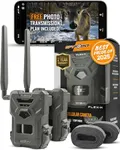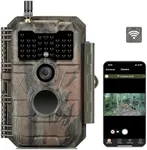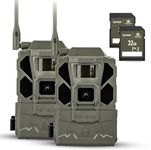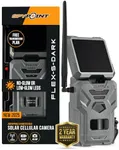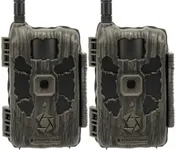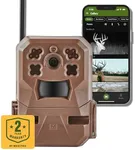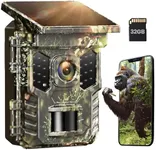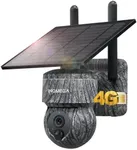Buying Guide for the Best Trail Cam For Security
When choosing a trail camera for security purposes, it's important to consider several key specifications to ensure you get the best fit for your needs. Trail cameras, also known as game cameras, are typically used for wildlife monitoring, but they can also be highly effective for security due to their motion detection capabilities and ability to capture images and videos in various lighting conditions. Understanding the key specs will help you make an informed decision and select a camera that meets your security requirements.ResolutionResolution refers to the clarity and detail of the images and videos captured by the camera. Higher resolution means clearer and more detailed images. For security purposes, a resolution of at least 8 megapixels is recommended to ensure you can clearly identify faces and other important details. If you need very high detail, consider cameras with 12 megapixels or more. However, higher resolution images take up more storage space, so balance your need for detail with your storage capacity.
Detection RangeDetection range is the distance at which the camera can detect motion and trigger a photo or video capture. This is crucial for security as it determines how far away an intruder can be before being detected. Short-range cameras (up to 50 feet) are suitable for small areas, while medium-range (50-80 feet) and long-range (80 feet and above) cameras are better for larger properties. Choose a detection range that covers the area you need to monitor effectively.
Trigger SpeedTrigger speed is the time it takes for the camera to capture an image after motion is detected. Faster trigger speeds are essential for security to ensure you don't miss any quick-moving intruders. A trigger speed of less than 0.5 seconds is ideal for most security needs. If you are monitoring a high-traffic area or need to capture fast-moving subjects, look for cameras with trigger speeds of 0.2 seconds or faster.
Night VisionNight vision capability allows the camera to capture clear images and videos in low light or complete darkness. This is achieved through infrared LEDs that illuminate the area without being visible to the naked eye. For security, it's important to have a camera with good night vision to monitor your property 24/7. Look for cameras with a high number of infrared LEDs and a long night vision range (at least 50 feet) to ensure clear nighttime footage.
Storage OptionsStorage options refer to how the camera saves the captured images and videos. Most trail cameras use SD cards, but some also offer cloud storage. For security purposes, it's important to have ample storage to avoid losing important footage. SD cards with a capacity of 32GB or more are recommended. If you prefer cloud storage, ensure the camera supports it and check for any associated subscription fees. Choose a storage option that fits your needs and allows for easy access to your footage.
Power SourceThe power source of a trail camera can be batteries, solar panels, or an external power supply. Battery-powered cameras are portable and easy to install but require regular battery changes. Solar-powered cameras are more sustainable and require less maintenance, but they need sufficient sunlight. Cameras with an external power supply offer continuous power but may have limited placement options due to the need for a power outlet. Choose a power source that suits your installation location and maintenance preferences.
ConnectivityConnectivity options include cellular, Wi-Fi, or no connectivity. Cellular cameras can send images and alerts to your phone via a mobile network, making them ideal for remote locations without Wi-Fi. Wi-Fi cameras can connect to your home network for easy access to footage and alerts but require a stable internet connection. Cameras without connectivity store footage locally and require manual retrieval. Choose a connectivity option based on your need for real-time alerts and ease of access to footage.
